In this article:
You’ve probably heard that fiber is an important nutrient for your digestive health.
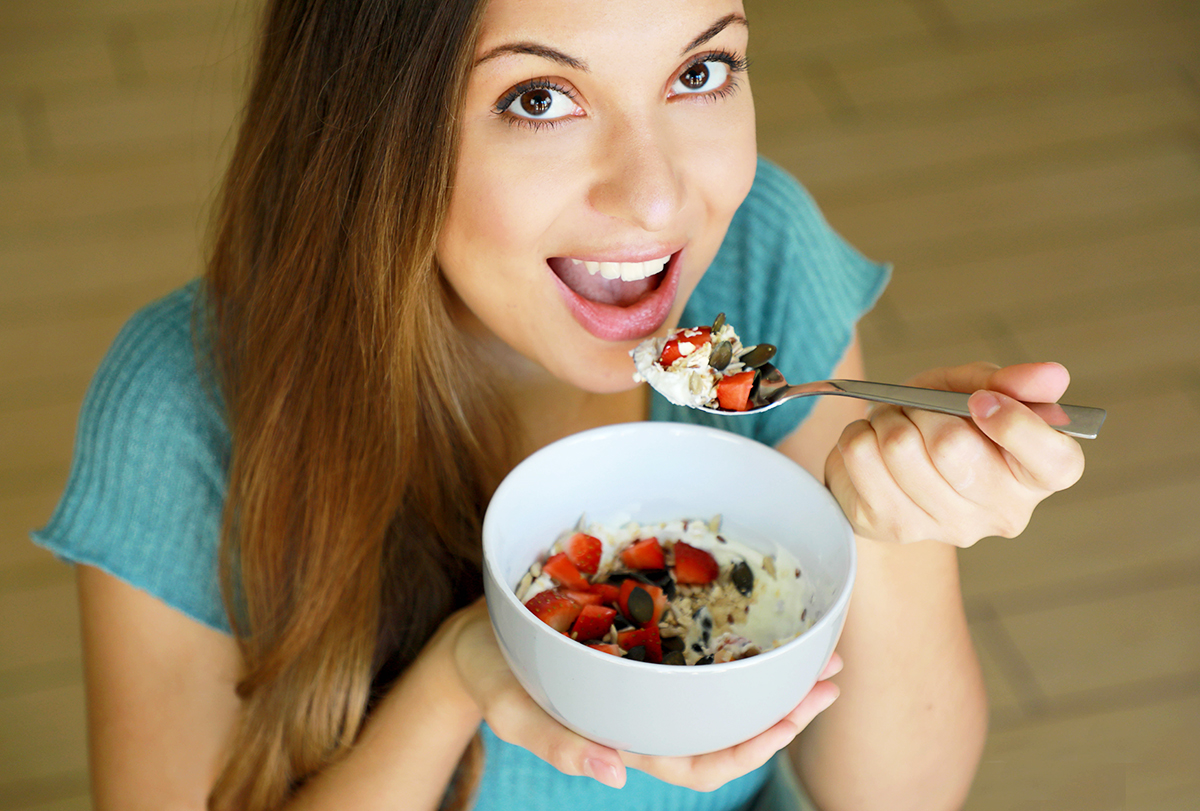
But do you know what exactly fiber is and what roles it plays in the body? Many people do not get enough fiber. Where can you get it? Let’s find out!
What Is Fiber in Food?
Fiber is a type of carbohydrate. You probably know about simple carbohydrates, meaning sugars, refined starches, etc., that break down easily.
You also might already know about complex carbohydrates, such as sweet potatoes and brown rice, that have the germ still attached and are digested more slowly.
Fiber is a complex carbohydrate that cannot be digested as it is resistant to digestive enzymes, (1)(2) and it thus passes through the body undigested. Cellulose, pectin, and lignin are examples of fiber molecules. (1)
The main role of dietary fiber is to add volume to the stools so that they become easier to pass. A regular bowel movement is very important for maintaining the health of the digestive system.
Types of Fiber
There are two types of fiber:
- Soluble fiber, which dissolves in water. This type of fiber is known to bring down your blood glucose and cholesterol levels, thereby helping in preventing and managing diabetes and hypertension, respectively. Oatmeal is an example of food rich in soluble fiber. (3)
- Insoluble fiber, which does not dissolve in water. The main function of this fiber is to add bulk to feces to facilitate smooth bowel movement. This helps prevent constipation (3) and other related problems, such as hemorrhoids. Wheat bread is an example of food abundant in insoluble fiber.
Benefits of Eating Fiber
The benefits of eating fiber are many. You may have heard that fiber is good for your digestion and bowel regularity. This is true. It is recommended that people with constipation increase the fiber in their diets because it increases and softens the bulk of the stool. (4)
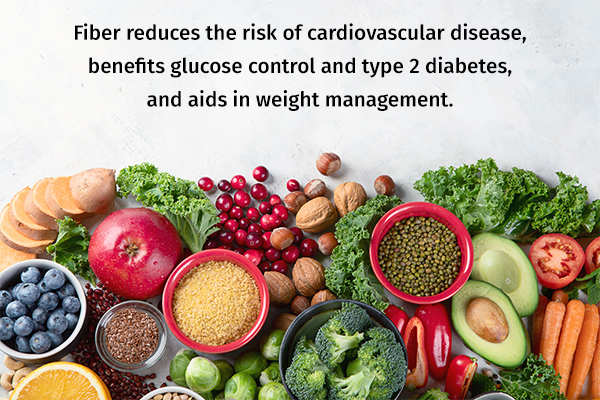
But there are other benefits of fiber! Here are just a few.
1. Reduces the risk of cardiovascular disease
Fiber reduces the risk of cardiovascular disease. (5) Soluble fiber, in particular, will pick up cholesterol and take it with it as it moves throughout the body. A low cholesterol level is one of the ways to lower your risk of CVD. (5)
2. Helps in glucose control
Fiber helps in glucose control and is beneficial for type 2 diabetes. Fiber is a complex carbohydrate and does not break down into sugars. Consuming fiber helps you stay full longer; it also stabilizes blood sugar levels and helps avoid spikes.
In addition, a review of studies has shown that fiber has a small reduction effect on HBA1C, the measure of blood glucose levels (6) over a period of 3 months. This suggests that increasing fiber can benefit those with diabetes. (6)
3. Aids in weight management
Fiber helps you feel full for longer, so you may not eat as many calories over the course of the day.
A recent review found that in successful weight loss studies, the criteria being at least 5% weight loss in an intervention study, increased fiber intake was a component of 21% of these studies. (7)
Best Foods to Consume to Increase Fiber Intake
Now that you know what fiber is and what it does, how can you increase your consumption of it? In more ways than you think!
Here are some of the best foods to increase your fiber consumption.
1. Pears
Pears are a great source of both soluble and insoluble fiber. One medium pear provides 6 grams of fiber (8) or 22% of your recommended fiber needs.
2. Strawberries
Strawberries contain almost 3 grams of fiber per 1 cup serving, 11% of your daily needs. In addition, fruit fiber is shown to have a prebiotic effect, which can benefit overall gut health. (9)
3. Avocados
In addition to its heart-healthy fats, avocados contain 7 grams of fiber per serving. They contain 30% soluble fiber, which benefits gut health, and 70% insoluble fiber, which benefits colon health. (10)
4. Bananas
A banana contains 2 grams of fiber per piece. Green bananas contain what is called resistant starch, (11) which functions similarly to soluble fiber and may reduce blood sugar spikes.
5. Broccoli
Broccoli contains 2.4 grams of fiber per serving. The fiber in broccoli may contribute to increased blood sugar control. However, such an effect could also be related to the antioxidant called sulforaphane in broccoli, which has been shown in a clinical trial to improve insulin sensitivity. (12)
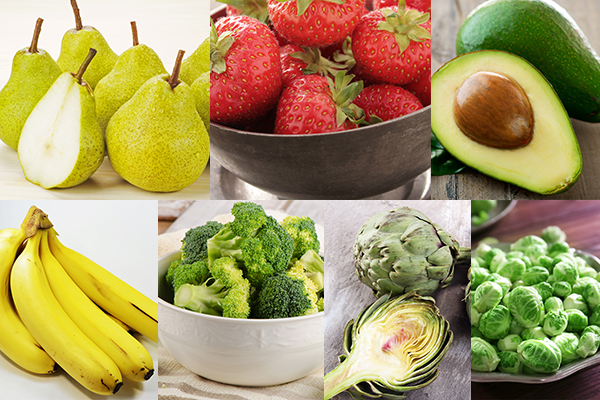
6. Artichokes
An artichoke contains an impressive 7 grams of fiber in a medium choke. The specific type of fiber in it is inulin, which is a prebiotic. (13)
7. Brussels sprouts
One cup of Brussels sprouts contains 3.3 grams of fiber out of the total 8 grams of carbohydrates. That’s 41% of the total carbs!
8. Lentils
Lentils contain 15 grams of fiber per cup! They also contain 17 grams of protein. This makes lentils a great carb choice that won’t spike your blood sugar and may benefit bowel and gut health. (14)
9. Quinoa
Quinoa is another great choice as a complex carbohydrate. It contains 5 grams of fiber per cup. Complex carbohydrates take longer to digest than simple carbohydrates, thus reducing blood sugar spikes. (1)
10. Oats
Oats are another complex carb that contains 4 grams of soluble and insoluble fiber per serving. Some of this fiber is in the form of beta-glucan, which has been shown in clinical trials to have a cholesterol-reduction effect. (15)
ALSO READ: What Makes Oats the Perfect Addition to Your Weight-Loss Diet
11. Popcorn
Surprisingly, popcorn is a whole grain! You’ll get 3.6 grams of fiber in 1 cup of air-popped popcorn. This doesn’t mean you should go overboard with it, as microwave varieties contain added fat and salt in the form of butter and flavorings.
12. Almonds
In addition to all the healthy fats, almonds also contain 3 grams of fiber, which is half of their total carbs.
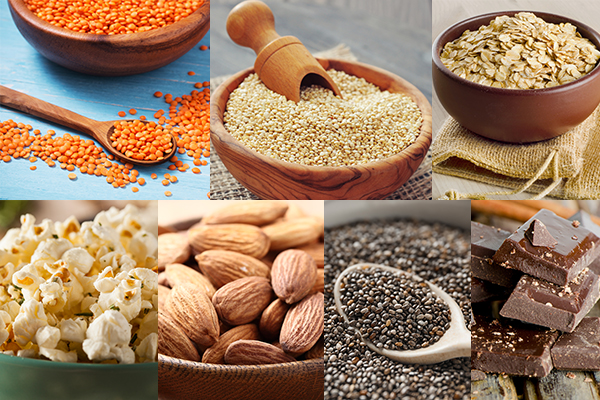
13. Chia seeds
One ounce of chia seeds contains an incredible 11 grams of fiber, nearly one-third of your daily recommended needs. Chia seeds are rumored to help with weight loss, and one recent study did show they had a small benefit on weight reduction in patients with obesity and diabetes. (16)
14. Dark chocolate
One ounce of dark chocolate (70% to 85% cacao) (17) contains 3 grams of fiber. Dark chocolate is also rich in antioxidants. (17) However, chocolates that have less than 70% cacao can contain a lot of added sugar and fat.
15. Others
In addition to those already discussed, other beans, such as chickpeas, contain lots of fiber. In general, fruits, vegetables, whole grains, and bean foods are likely to at least have some fiber in them.
Important Reminders When Consuming Fiber
There are two main points to keep in mind when trying to increase fiber content or include it in the diet.
- First, if you are not used to eating fiber, it is important to start slowly. Starting too quickly can lead to diarrhea and stomach cramps.
- Second, make sure to drink lots of water! This will help move the fiber through your body. Not drinking enough water and then eating too much fiber can lead to a nasty ball of fiber stuck in your intestine. This is called a phytobezoar, and it may require surgical removal. (18) Fortunately, these are rare and only occur with excessive fiber intake.
How Much Fiber Should Be Consumed Daily?
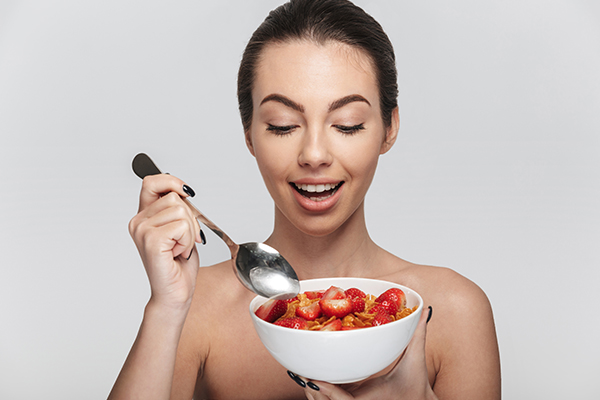
The Academy of Nutrition and Dietetics recommends that children consume 20–30 grams of fiber daily. Women should aim for 25–35 grams and men 25–38 grams daily. (3)
As you age, you do not need to consume as much fiber. For those over 50, it is recommended to consume between 20–30 grams of fiber daily. (3) However, a majority of Americans miss that mark; they consume only an average of 15 grams of fiber per day. (3)
Final Word
By consuming the foods mentioned above and switching to whole grains, adding fiber to your diet will get you on the road to better health!
- Was this article helpful?
- YES, THANKS!NOT REALLY


